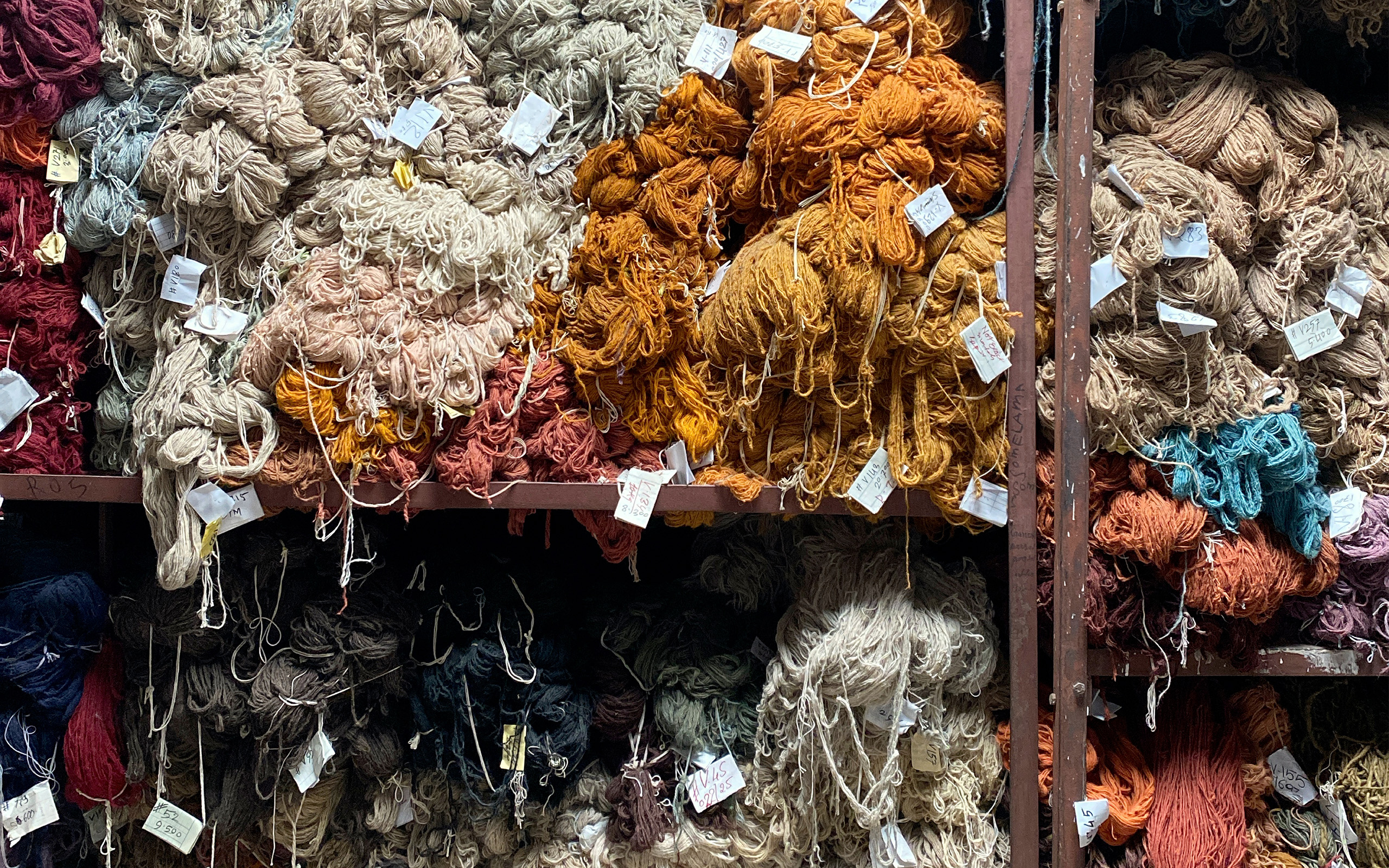This topic is one that has already created a bit of a buzz within the world of rugs. Let me begin by explaining for those of you not familiar with the topic, what crossed and uncrossed weaving is exactly – as it relates to Tibetan style construction.
Crossed weaving refers to the method of offsetting the warp strands between each successive weft strand, so that as the carpet is knotted, the foundation is concurrently woven into a stable fabric in its own right (albeit a coarse one). It then follows that uncrossed weaving, does not employ the warp offset, and thus does not weave a stable fabric. Removing the knots from a crossed woven rug would reveal this woven fabric, whereas removing the knots from an uncrossed woven rug would reveal perpendicular warp and weft strands that are not interwoven, existing in two different distinct planes. That is what we are talking about, but is it important? Depends on whom you ask.
Historically speaking, crossed weaving is the time honoured construction method, presumably developed through generations of weavers passing this knowledge down to each successive generation, which is how Tibetan weave carpets were made until the last few years. Uncrossed weaving on the other hand represents a newer weaving method (some would argue it is not even weaving, rather a construction technique) that saves on time and labor, is easier to weave, and produces a product which is aesthetically indiscernible from crossed weaving. So, just as previous generations developed crossed weaving, is this just another innovation in weaving to be passed down to the next generation? Again, it depends on whom you ask.
Whom should we ask? The weaver? The importer? The salesman (or saleswoman)? The customer? Each one has different answers, different concerns, and different reasons for caring (or not). What then do you get when you ask me?
I feel the “uncrossed technique” is an innovative time and cost saving construction method, allowing manufacturers and importers to deliver carpets in a more timely manner, and at a slightly lower price point than those using “crossed woven” construction. I do not however feel that it is weaving (as in truth no weaving is taking place), and given my experience – and maybe a little instinct – I feel that crossed weaving represents a more enduring construction method over the uncrossed technique. Once the pile is worn to the warp and weft, the uncrossed technique carpet will presumably loose integrity across its width and fail. I do not have data to firmly back this up, and pose an open challenge to the industry to subject two carpets, one of each method, to destructive wear testing as a comparison, to definitively answer this question.
All of that being said though, the salesman in me asks: “Who cares?” In truth, I believe that most carpets produced and sold in today’s (North American) marketplace are sold decoratively, where style, aesthetic, and price, not longevity are factors. Will the carpet be able to be passed down to the next generation? The answer is: “Will the next generation want it?” Within this environment I feel that we (as salesmen and saleswomen) owe it to our customers (and to ourselves from an ethical standpoint) to know of the difference and to pass that knowledge on. Everyone – salesman, importer, customer, et alia – should be aware of the differences, including that an uncrossed carpet should be priced inherently less than a crossed woven carpet, all other factors being equal. Even with this transparency, I feel that aesthetic and price will still dominate the purchasing decision.
Of course I am not just a salesman, but also a consumer. Would I buy an uncrossed technique carpet for myself? For the answer to that I’d invite you to visit my home and see what carpets are on my floors for yourself.

